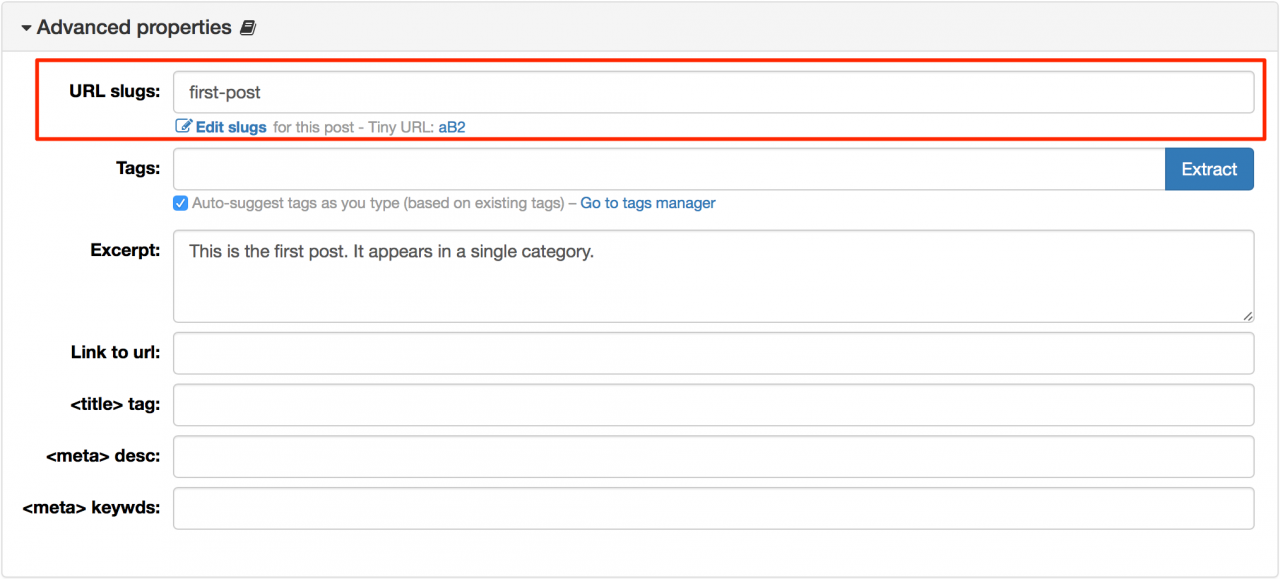Slug
The slug is the last part of an URL which uniquely identifies a page/resource on your b2evolution installation.
For example, let’s consider an URL like http://www.mysite.com/cat/subcat/hello-world. In this case, the slug is hello-world.
Different types of slugs
Most slugs will reference posts/items or standalone pages.
However some slugs can have a special purpose, such as the help slug which is configured by default as the help page, which will display disp = help.
In a future version of b2evo, categories will also use unique slugs from the slug list.
Post/Item slugs
The slug for each Post can also be found in the Post Advanced Properties Panel:

Multiples slugs / Uniqueness
Resources like Posts/Items can have multiple slugs (aliases) but one slug always points to only one resource.
Slugs are unique within a b2evolution instance and cannot have duplicates, even in two different Collections. This allows b2evolution to find a resource when someone links to it with an old URL and it’s later moved to a new URL (New blog/collection, new URL scheme, new category, etc.)
The list of all slugs can be edited through the back-office > System > Slugs.
Tiny slug
Posts/Items will automatically get "Tiny Slugs" like for example Ay4 so you can automatically use "tiny URLs" to link to your posts on social media sites such as Twitter, like for example http://www.mysite.com/Ay4
Canonical slug
When an Item has multiple slugs, one of them will be canonical, which means that if you call the item with any other (secondary) slug (including its tiny slug) you will be redirected to the canonical slug/canonical URL.
The canonical slug is the one that appears first in the list of slugs for an post.

